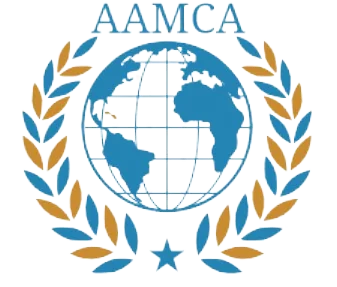Ongoing Conflicts: Israel-Palestine War
The Israel-Palestine conflict has been a long-standing issue with deep-rooted historical grievances and political complexities. During the Trump administration, the dynamics of this conflict experienced notable transformations, significantly influenced by the policies of Israeli Prime Minister Benjamin Netanyahu. The Trump administration’s decisions were perceived as favorable to Israel, thereby emboldening aggressive actions in Gaza and elsewhere. The recognition of Jerusalem as Israel’s capital and the proposed “peace plan” were pivotal moments that altered the expected diplomatic practices regarding the two-state solution.
The U.S. response to the conflict, particularly its use of veto power in the United Nations Security Council, has had far-reaching implications. Vetoes on resolutions condemning Israeli settlement expansions in the West Bank not only limited international efforts aimed at counteracting these actions but also contributed to perceptions of U.S. bias towards Israel. This stance undermined the concept of a balanced negotiation framework, thereby stalling any viable two-state solution, which is considered by many as the most practical resolution to the enduring conflict.
Continued Israeli settlement expansions have exacerbated tensions and violence against Palestinians, leading to dire humanitarian consequences. Reports indicate that such expansions lead to increased clashes, loss of life, and a further deterioration of living conditions for Palestinian communities. The portrayal of U.S. diplomatic efforts during this period has often been deemed inadequate, lacking the necessary actions to address the humanitarian crisis worsening within Palestinian territories. The international community’s response to these developments has been mixed, with various actors calling for renewed engagement and questioning the effectiveness of U.S. leadership in facilitating peace.
The War in Ukraine: A Stalemate
The war in Ukraine has remained a point of contention and instability throughout the era of Donald Trump’s presidency. The lack of significant progress in achieving a resolution has resulted in a prolonged stalemate, allowing Russian President Vladimir Putin to solidify his strategic comfort in maintaining the status quo. Throughout this period, drone warfare has become a staple in the ongoing conflict, further complicating the landscape as both sides engage in tactics that leverage emerging technologies, leading to devastating consequences for Ukrainian civilians and infrastructure.
During Trump’s administration, responses to the conflict were notably mixed. While the former president did issue threats of sanctions against Russia, many critics perceived these measures as largely rhetorical, lacking the decisive action necessary to shift the dynamic on the ground. This perception was starkly highlighted by the frustration felt among European allies, who found themselves grappling with the apparent inaction from the U.S. While they awaited clear leadership, some European nations remained hesitant to take drastic steps without a coherent U.S. strategy, contributing to a sense of paralysis in addressing the crisis. The belief that NATO would remain unified and strong was tested as the alliance faced challenges balancing its response to an assertive Russia while managing the unpredictable nature of U.S. foreign policy under Trump.
The geopolitical implications of the conflict extend beyond Ukraine, influencing global power dynamics. The ongoing war has not only reinforced Russia’s foothold in Eastern Europe but has also elevated tensions with NATO and the West. Additionally, the lack of a cohesive response from Western allies has emboldened authoritarian regimes, casting doubts on the resolve of democratic nations to counteract aggression effectively. As the conflict rumbles on, the ramifications of this stalemate will continue to impact international relations for the foreseeable future.
Global Humanitarian Crises: A Worsening Landscape
During the Trump administration, the world witnessed a series of humanitarian crises that underscored the challenges of global governance and the profound human suffering resulting from conflict and instability. One of the most severe crises was the civil war in Sudan, which spiraled into a dire situation characterized by mass displacements and violent confrontations, leading to significant civilian casualties. The conflict not only exacerbated humanitarian needs but also posed challenges for regional stability, as neighboring countries grappled with an influx of refugees.
In Afghanistan, the aftermath of the Taliban’s resurgence was exacerbated by a devastating earthquake that struck the region. The country’s political landscape, already fraught with instability, suffered tremendous setbacks as aid efforts were hampered by ongoing security concerns and the Taliban’s strict control over governance. As a result, many Afghans faced dire conditions, with limited access to essential services and humanitarian support, further deepening the crisis.
The situation in Myanmar also deteriorated following the military coup that took place in February 2021. This event led to widespread civil unrest and protests, which were met with violent crackdowns by the military. The ongoing turmoil severely impacted the daily lives of countless citizens, forcing many into hiding or exile and creating a significant humanitarian crisis. Additionally, instability in Haiti and various Latin American countries intensified, fueled by political corruption, economic despair, and natural disasters, resulting in widespread social unrest and increased migration pressures throughout the region.
Overall, the civil suffering experienced across these regions highlights the complicated relationship between humanitarian aid and U.S. foreign policy during this period. While various initiatives aimed to provide relief, the effectiveness of these efforts was often limited, as the complexities of each situation demanded nuanced responses that were not always forthcoming, ultimately leaving many civilians vulnerable amidst the chaos.
Geopolitical Shifts and Challenges to Western Dominance
During the Trump administration, the global geopolitical landscape manifested notable transformations as various entities, notably the BRICS bloc and the Shanghai Cooperation Organization (SCO), gained prominence as competitors to traditional Western powers. This rise prompted a re-evaluation of longstanding alliances and power structures, raising concerns about challenges to Western hegemony. The BRICS nations—Brazil, Russia, India, China, and South Africa—coalesced around shared economic interests and political cooperation, seeking to establish a multipolar world order that diminishes the unilateral influence of the United States and its allies.
In conjunction with these shifts, Trump’s administration executed a series of aggressive tariffs, particularly aimed at India. This economic strategy not only aimed to protect American industries but inadvertently fostered deeper diplomatic and economic ties between India and its Eurasian counterparts. The tariff policies catalyzed a reevaluation of India’s trade relations, prompting the nation to pursue collaborations beyond the Western sphere, potentially realigning its strategic focus throughout Asia and increasing its involvement in organizations like the SCO.
The ramifications of these emerging alliances underscore a significant transition in global power dynamics. With the United States retreating from its role as the central arbiter of international relations, other nations are recalibrating their foreign policies. The strengthening ties between India and Eurasian entities reflect a broader pattern wherein nations previously aligned with Western powers seek alternative partnerships. This evolution not only challenges Western dominance but also underscores the necessity for a more nuanced understanding of the shifting geopolitical landscape characterized by emerging powers and their strategic ambitions.




